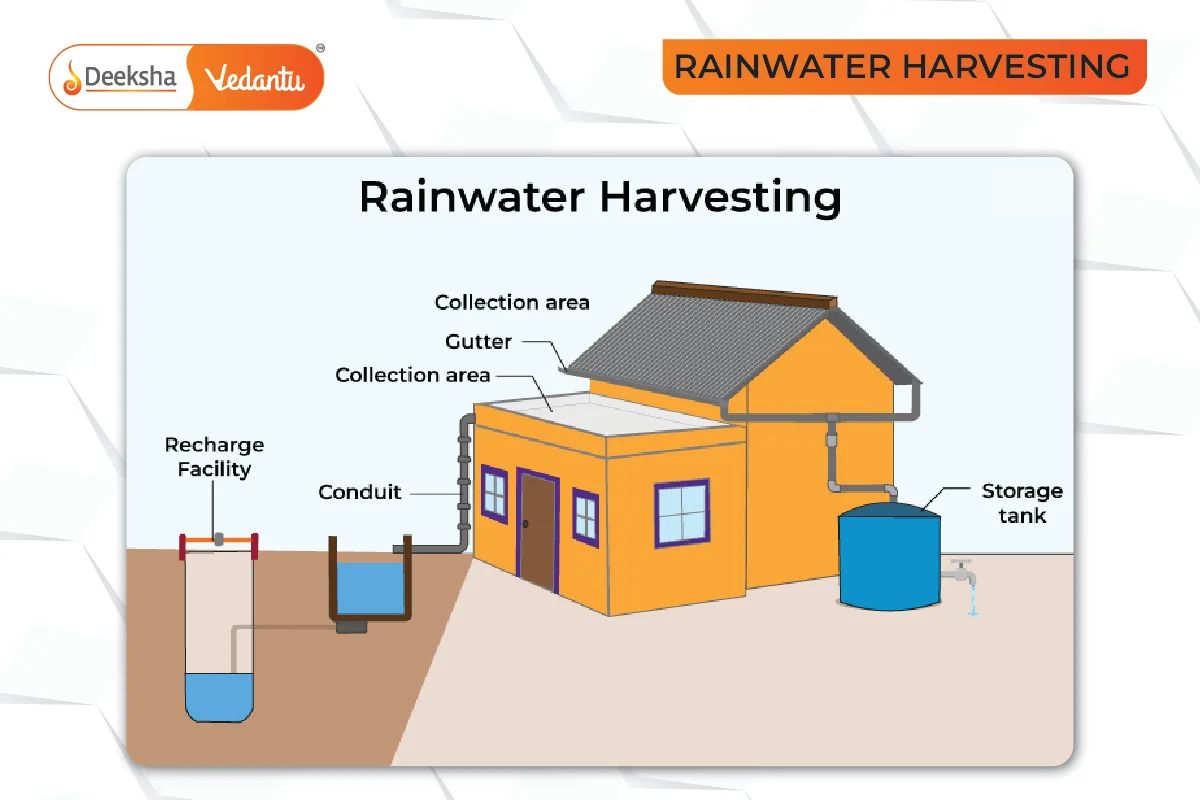Rainwater harvesting is an ancient and efficient technique of collecting and storing rainwater for future use. The practice involves capturing rainwater from surfaces such as rooftops and landscapes, then storing this water in tanks or using it to recharge groundwater levels. This method provides a sustainable solution to water scarcity issues, helping to conserve water resources for various domestic, agricultural, and industrial uses.
What is Rainwater Harvesting?

Rainwater harvesting is the process of collecting runoff from roofs and other surfaces to store for later use. Typically, the system consists of a catchment area, a conveyance system, a storage facility, and treatment processes. The primary goal is to make rainwater available for daily use and to increase groundwater levels, thereby benefiting the environment significantly.
How Rainwater Harvesting Works
- Catchment Area: This is where rainwater is collected, often a rooftop or ground area specially adapted to direct water to a storage system.
- Conveyance System: Pipes or gutters that transport rainwater from the catchment area to the storage system.
- First Flush: A mechanism to discard the initial rainwater, which may contain pollutants from the catchment surface.
- Filters: Systems to remove debris and contaminants from the water before it enters the storage tank.
- Storage Tanks: These are used to hold the collected water. They can be above or below ground and are often made from materials like plastic, concrete, or fiberglass.
- Recharge Structures: These allow for the water to infiltrate into the groundwater supply, aiding in the replenishment of aquifers.
Importance of Rainwater Harvesting
Rainwater harvesting helps mitigate the effects of drought and reduces dependence on wells and other sources of groundwater. By reducing stormwater runoff, this practice can also lessen erosion and flooding in urban areas. Environmentally, it decreases the impact on local waterways by reducing pollutants entering these ecosystems.
Advantages of Rainwater Harvesting
- Cost-Effective: Reduces water bills and the demand for municipal water.
- Environmentally Friendly: Lowers the ecological footprint by decreasing demand on natural water bodies and municipal treatment systems.
- Water Quality: Often superior for landscaping and gardening, as it is free from many chemicals found in ground and surface water.
- Reduces Soil Erosion and Flooding: By capturing stormwater runoff, rainwater harvesting can mitigate soil erosion and reduce the risk of flooding.
Disadvantages of Rainwater Harvesting
- Initial Investment: The setup cost for rainwater harvesting systems can be high, depending on complexity and size.
- Maintenance: Systems require regular cleaning and maintenance to ensure water quality and functionality.
- Reliability: Rainfall is unpredictable and can vary, making rainwater harvesting less reliable in drought prone regions. Without adequate rainfall, reserves can quickly deplete, leaving the system ineffective.
- Space Requirements: Adequate space is needed for the installation of large tanks, which can be challenging in urban settings.
- Quality Control: Without proper filtration and maintenance, harvested rainwater can harbor pathogens and debris.
Steps to Implement Rainwater Harvesting at Home
- Assess Your Needs: Determine the water requirement for your household and garden. This will help in designing a system with adequate storage capacity.
- Design the System: Plan the layout of the catchment area, conveyance system, and storage facilities. Consider factors like roof material, slope, and the area available for tanks.
- Install Gutters and Downspouts: These should be designed to maximize water capture and minimize blockages.
- Set Up Storage Tanks: Choose a suitable location that can support the weight of a full tank and is easily accessible for maintenance.
- Implement Filtration Systems: To ensure water quality, install filters at the entry points of storage tanks.
- Plan for Overflow: Connect overflow outlets from tanks to water gardens, recharge pits, or existing drainage systems.
- Regular Maintenance: Regularly check and clean the catchment area, filters, and storage tanks to maintain water quality and system efficiency.
FAQs
Rainwater harvesting can be implemented in almost any type of building, but the effectiveness and capacity are influenced by factors like roof area, local rainfall patterns, and available space for tanks or other infrastructure.
Rainwater harvesting is an effective way to mitigate the effects of drought by providing an alternative water source that can be used for various non-potable and, with proper treatment, potable purposes.
Yes, challenges include the initial cost of installation, the need for regular maintenance, the dependence on rainfall patterns which can be unpredictable, and potential health risks if the water is not properly filtered or stored, leading to mosquito breeding and waterborne diseases.
Benefits include reducing water bills, increasing water availability, conserving energy, improving the quality of groundwater, and providing a reliable water supply for agricultural and landscape irrigation.
A typical system includes a catchment area to collect rainwater, a conveyance system to transport the water, a filter to remove pollutants, and storage tanks to hold the water until it is needed. Some systems include recharge structures to help replenish groundwater.
Harvesting rainwater helps mitigate water scarcity, reduces dependence on groundwater, and can significantly decrease water bills. It also lessens the impact of runoff on the environment, helping to prevent erosion and pollution.
Rainwater harvesting is the practice of collecting, storing, and utilizing rainwater from surfaces like rooftops and land surfaces. It helps conserve water by using it for various purposes like irrigation, washing, and even drinking, after proper treatment.











Get Social